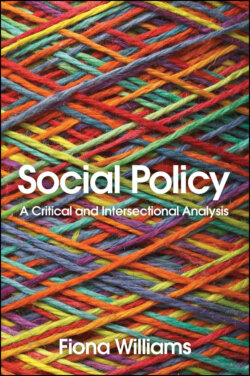Читать книгу Social Policy - Fiona Williams - Страница 16
Conclusion
ОглавлениеThe aim of this chapter has been to set out my broad analytical approach and influences. This may be summed up as an intersectionally informed critical approach. In the journey to this point, the chapter looked first at the ebbs and flows in the influence of critical thinking that originally emerged from new social movements on the core theories of social policy since the 1990s. This offered an interpretation of multiple contradictory dynamics involved in its (re)marginalization, which came not only from within the discipline but also from social, economic, political and intellectual developments over that time. These included the shift within neoliberalism to minimize advances in equality by focusing on delivering social justice through labour market activation and on a political era that saw itself as post-feminist and post-racial. This was also accompanied by the relative fragmentation not simply of those activisms but in their greater specialization and partition within the academy. The upsurge in social movement activism since 2008 in the face of the rise of popular nationalist right-wing politics provides one impelling reason for thinking through how to give these critical analyses greater consolidation in reflecting on the present and the future for welfare states.
In these terms, the chapter considered the relevance of intersectionality as an approach that, on the one hand, combines theory, method and political practice and, on the other, is highly attuned to inequalities and power around race, gender, disability, sexuality and class. I argued that intersectionality’s focus on lived experience, on understanding the complex and multiple nature of contestations, social inequalities and social justice, is crucial. It enables hidden injustices to be unfolded and provides an understanding of the relationship between commonalities and specificities and their link to political practices – all extremely relevant to critical social policy approaches. At the same time, as a relatively loose approach, it is necessary to be aware of problems in its application as well as its potential for social policy analysis. In order to mitigate these I turned to key analytical insights from critical thinking in social policy which in some ways are shared with an intersectional approach. These include the importance of contestation, in particular, but also of context, contingency, contradiction and criticality. Together the two approaches can clarify the connections between social, cultural, political and economic injustices to examine the nature of neoliberal welfare states within a political economy of global financialized capitalism which is extractivist, patriarchal and racializing. This requires a frame of analysis that avoids reductionism to single causes or monolithic conspiracy and allows for its contradictory nature. Chapter 3 takes this up.
